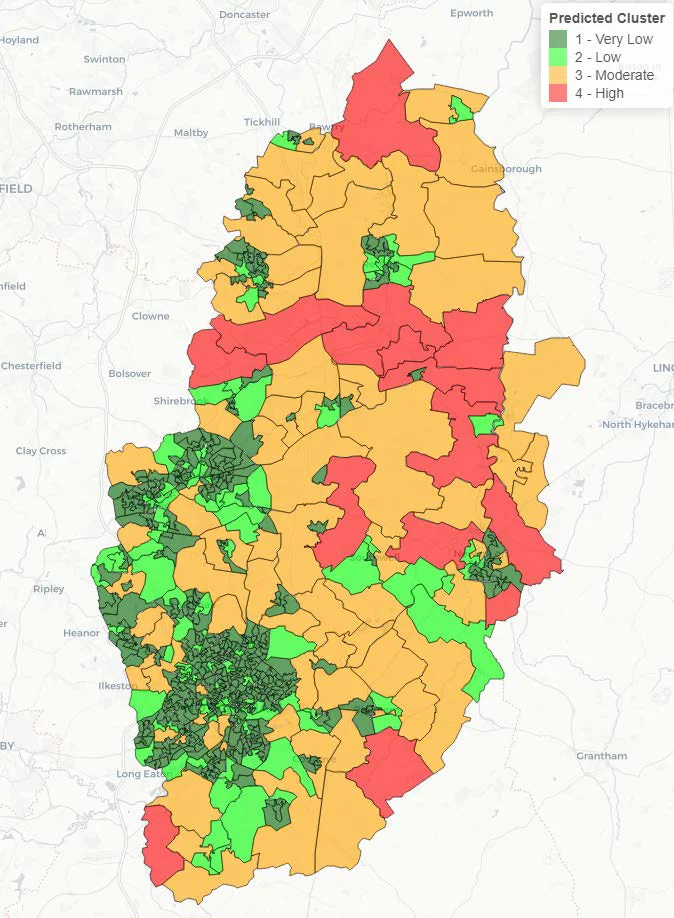RTCs
Variable Importance
- As with vehicle fires, the most important factor for predicting the category of Very Low to Very High risk for RTCs is the Total Street Length (km).
- Other geographical and population variables are of importance.
- The assessment of RTCs was based on the LSOA in which the RTC occurred.
- Stats19 data for the home locations of persons involved in RTCs was not available for Nottinghamshire; this would be a potential improvement to the assessment of RTC risk.
Top 10 risk factors
| Short name | Relative importance | Relationship | Origin |
|---|---|---|---|
| StreetsLength Km | 100.00% | Positive | HERE |
| MajHwyLength Km | 96.67% | Positive | HERE |
| Area sqKm | 79.22% | Positive | ONS |
| Population Per SqKm | 65.94% | Negative | Census |
| Primary Route Length Km | 42.45% | Positive | Census |
| Full time employees 2019 | 38.30% | Positive | Census |
| A Country Living | 36.83% | Positive | Mosaic |
| Mosaic Money Affluence | 33.83% | Positive | Mosaic |
| Geographical Barriers Sub-domain Score | 31.88% | Positive | IMD |
| All categories Long term health problem or disability | 31.19% | Positive | Census |
Predicted Risk Cluster

- Using the top ranked risk variables, the model predicts the risk level in each LSOA.
- This map summarises the output in terms of whether each LSOA is most likely to be Very Low to Very High risk.
- Most of the highest risk LSOAs are in rural areas.